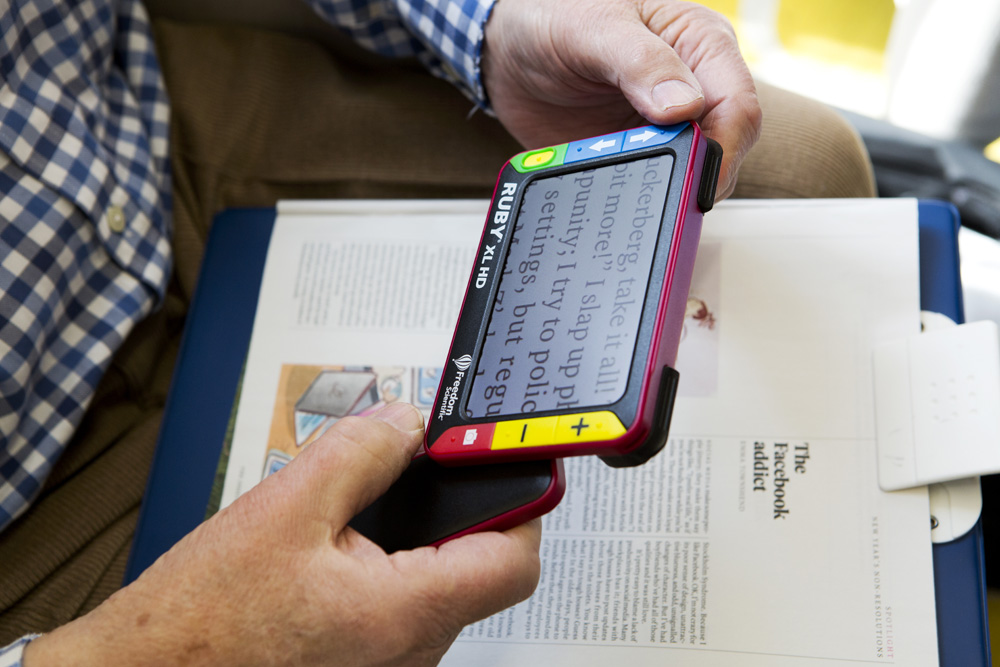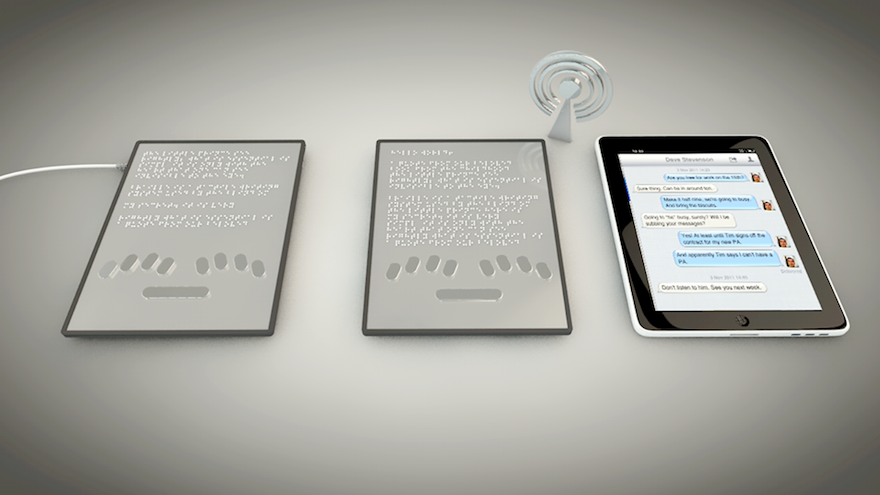Speech-to-Text Devices for Low Vision: Enhancing Ease of Use
Speech-to-Text Devices for Low Vision: Enhancing Ease of Use
Blog Article
Empowering Freedom With Assistive Innovation for the Blind
The combination of assistive innovation into the lives of individuals with visual impairments stands for a considerable development in promoting freedom and self-sufficiency. From ingenious screen visitors to sophisticated wise walking canes, these tools not only enhance daily navigating and communication however additionally equip individuals to involve meaningfully in different facets of life. As we discover the myriad benefits and real-world applications of these innovations, it becomes essential to analyze the hidden elements that contribute to their effectiveness and the capacity for future developments in this important area.
Overview of Assistive Technology

The growth of assistive innovation is based in principles of inclusivity and empowerment. Technologies in software application, equipment, and sensory enhancements give individuals with alternatives tailored to their details needs. From display readers that convert message to speech, to tactile tools that convey details through touch, these devices transform the method individuals involve with their environments.
In enhancement to useful applications, assistive modern technology fosters better social inclusion and engagement in various markets, including education and learning and employment (Wearable technology for low vision). As study and development continue to advance, the potential for assistive innovation to additionally enhance the lives of visually impaired individuals continues to be encouraging, leading the way for an extra equitable society where every person can grow
Sorts Of Assistive Instruments
A selection of assistive tools have emerged to sustain individuals with visual disabilities, each made to satisfy details needs and boost day-to-day functioning. These gadgets range from low-tech options to modern developments, supplying diverse options for individuals.
Low-tech tools consist of magnifiers and large-print materials that help in analysis and writing. Braille tools, such as Braille styluses and slates, enable tactile analysis and interaction. Positioning and flexibility help, like white walking sticks, assist users navigate their setting securely.
On the higher end of the range, digital zoom systems and screen readers supply significant support. Electronic magnifiers permit customers to expand text and photos on displays, while screen viewers transform digital content right into manufactured speech, helping with access to details on computer systems and mobile phones.
Mobile phone applications likewise play a critical duty, supplying features like message recognition and navigating help. Wearable technology, such as smart glasses outfitted with increased truth, is emerging as an appealing device to improve situational awareness.
Advantages of Assistive Innovation
The integration of assistive modern technology dramatically improves the lifestyle for people with visual disabilities. These technologies encourage users by advertising independence, allowing them to browse their atmospheres extra efficiently and execute daily jobs with greater simplicity. Display readers and zoom software program permit individuals to access digital info, cultivating expert and academic possibilities that might have previously been out of reach.
Moreover, assistive tools such as clever canes and GPS applications offer real-time navigation help, boosting mobility and security. This boosted freedom not just boosts self-worth yet also motivates social involvement, enabling users to participate more fully in their communities.
Assistive technology additionally assists in interaction, aiding customers get in touch with others via voice acknowledgment and text-to-speech applications. This ability is crucial for preserving connections and accessing important info.
Furthermore, the personalization options available with many assistive technologies make certain that customers can customize gadgets to their particular needs, better boosting usability and effectiveness. Generally, the navigate here benefits of assistive modern technology for people with visual impairments are extensive, promoting a more comprehensive society where everyone can seek their goals and aspirations.
Instance Studies and Success Stories
Highlighting the transformative effect of assistive modern technology, numerous situation research studies highlight how people with aesthetic impairments have effectively incorporated these devices into their daily lives. One compelling instance entails an university student who used display analysis software program to browse on the internet resources and academic materials successfully. This modern technology not just promoted her education and learning yet also enhanced her confidence in taking part in discussions and group projects.
Another case study features a professional who employs a smart device application designed for navigating and object recognition. By utilizing this app, he has gained back freedom in both his individual and workplace, enabling him to commute separately and engage with associates better.
Furthermore, a retired person shared her experience with braille e-readers, which enabled her to access a vast selection of literary works and remain linked with her community through publication clubs.
These success tales highlight the important function of assistive technology in cultivating freedom, improving lifestyle, and promoting social assimilation for people with visual impairments (Voice-activated assistive devices). By accepting these cutting-edge tools, individuals can get rid of obstacles and take possibilities that contribute to their professional and individual fulfillment

Future Fads in Assistive Modern Technology
Development in assistive modern technology is positioned to redefine the landscape of assistance for people with visual impairments. Emerging fads stress the combination of man-made intelligence (AI) and artificial intelligence, which boost the capability of gadgets that assist with navigating and see post details availability. AI-driven applications are now capable of translating visual data in real-time, enabling customers to engage with their environment extra separately.
Moreover, the growth of wearable innovation is progressing rapidly. Smart glasses furnished with augmented truth (AR) can give audio descriptions of surroundings, transforming just how users engage with public rooms. These devices not only advertise freedom but likewise foster social incorporation.
In Addition, the Internet of Things (IoT) is making homes smarter, enabling smooth connectivity between assistive gadgets and click resources day-to-day devices. This connection encourages users by allowing voice-activated controls and computerized feedbacks tailored to private demands.
Verdict
To conclude, assistive innovation plays an essential duty in encouraging people with aesthetic problems by boosting their freedom and involvement with their environments. The varied variety of applications and tools readily available not just promotes navigating and communication however likewise advertises social integration and opportunities for professional and personal growth. As innovations proceed in this area, the capacity for enhancing the lifestyle for those with visual impairments will certainly increase, promoting higher autonomy and empowerment.

Report this page